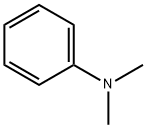A6697412
N-Phenyl-1-naphthylamine , 98% , 90-30-2
Synonym(s):
N-(1-Naphthyl)aniline;1-(N-phenylamino)naphthalene;N-1-Naphthylaniline;N-Phenyl-1-naphthylamine;NPN
CAS NO.:90-30-2
Empirical Formula: C16H13N
Molecular Weight: 219.28
MDL number: MFCD00003878
EINECS: 201-983-0
| Pack Size | Price | Stock | Quantity |
| 25G | RMB40.80 | In Stock |
|
| 100G | RMB92.80 | In Stock |
|
| 500G | RMB337.60 | In Stock |
|
| others | Enquire |
Update time: 2022-07-08
PRODUCT Properties
| Melting point: | 60-62 °C(lit.) |
| Boiling point: | 226 °C15 mm Hg(lit.) |
| Density | 1,1 g/cm3 |
| vapor pressure | 0.504 hPa (150 °C) |
| refractive index | 1.7020 (estimate) |
| Flash point: | >200°C |
| storage temp. | Store below +30°C. |
| solubility | 0.003g/l |
| form | Crystals or Flakes |
| pka | 0.78±0.30(Predicted) |
| color | Pinkish to light brown |
| Water Solubility | insoluble |
| λmax | 252 nm |
| BRN | 2211174 |
| Stability: | Stable. Incompatible with strong oxidizing agents, strong acids. |
| CAS DataBase Reference | 90-30-2(CAS DataBase Reference) |
| NIST Chemistry Reference | 1-Naphthyl phenyl amine(90-30-2) |
| EPA Substance Registry System | N-Phenyl-1-naphthylamine (90-30-2) |
Description and Uses
N-Phenyl-1-naphthylamine can be used as fluorescent probe for the determination of critical micelle concentration of surfactants. N-Phenyl-1-naphthylamine was used in a method for determination of the concentration of organolithium and organomagnesium reagents. N-Phenyl-1-naphthylamine was used as hydrophobic probe to study the phase transitions of membrane lipids in whole cells .
Safety
| Symbol(GHS) |    GHS07,GHS08,GHS09 |
| Signal word | Warning |
| Hazard statements | H302-H317-H373-H410 |
| Precautionary statements | P260-P273-P280-P301+P312-P302+P352-P314 |
| Hazard Codes | Xn,N |
| Risk Statements | 22-36/37/38-50/53-43 |
| Safety Statements | 26-36-61-37/39-29-60-36/37 |
| RIDADR | 3077 |
| WGK Germany | 2 |
| RTECS | QM4500000 |
| Autoignition Temperature | >500 °C |
| TSCA | Yes |
| HazardClass | 9 |
| PackingGroup | III |
| HS Code | 29214980 |
| Hazardous Substances Data | 90-30-2(Hazardous Substances Data) |
| Toxicity | LD50 orally in Rabbit: > 2000 mg/kg |




